

I am a thrifter. I’ve made this statement many, many times. In my opinion, it’s a badge of honor, but I didn’t always shop this way.
A memory surfaced the other day. I was feeling thankful I wouldn’t have to go to the mall to shop for holiday presents this year when I remembered a trip to Mall of America from way back in college. A friend and I had taken the bus from our dorm, bought a soft sugary pretzel, and were shopping in Forever 21, as you do when you’re nineteen. There was loud music, obnoxious perfume in the air, intense fluorescent lighting, overstocked racks, and rows of shelves and tables and I remember thinking, This isn’t nice. This isn’t really that fun. But what can you do?
As a senior in college, it felt great to buy my graduation dress from a beloved vintage shop on Grand called Lula Vintage. When I went into the store, the owner had oldies playing at a respectable volume and the sun was streaming in through the huge storefront windows. She asked me what kind of dress I was looking for and then she pulled dresses for me to try on while we chatted away. It was very nice and very fun. Experiences like these, plus many, many others along the way, have become the foundation for my love of thrifting and shopping secondhand.
I no longer buy fast fashion. (You can give me my gold star later.) I thrift my kids’ clothes and our home decor because I think those are two new types of fast fashion. I sell some of the vintage pieces I find online and I encourage people, openly, persistently, to thrift! Thrift, I tell everyone. It’s saving the planet! Thrifting takes money away from stores that don’t pay all their workers a livable wage! Thrifting is really super fun!
Gentrification and Thrift Stores
It was a shock (all capitals SHOCK) to hear some folks online talking about “the gentrification of thrifting” and taking issue with thrifting becoming popular. At first, I felt defensive, probably guilty, and a little bit like, Yeah, right. You (the online you, the opinionated you) can’t take this from me. It’s mine! I’ve been nurturing this pastime for over a decade!
I started from that standpoint, and then I relaxed. Since then, I’ve done some reading and I have so much to say! I have lots of feelings and opinions, but I’m also very willing to hear out all other angles and personal takes. Feel free to, disagree and even get a little heated re: my thoughts on thrifting. I can handle it. Especially if we all keep in mind that we’re coming from the best place possible: a genuine love of buying secondhand.
If thrift stores are overshopped, folks who need the items they sell won’t have access to them. Similarly, when thrift stores are heavily shopped with an influx of people who just discovering thrifting, those who manage the stores may charge more, making the clothes and other goods unaffordable for the people in the communities who might need them.
The general theory behind the gentrification of thrifting is this: If thrift stores are overshopped, folks who need the items they sell won’t have access to them. Similarly, when thrift stores are heavily shopped with an influx of people who just discovering thrifting, those who manage the stores may charge more, making the clothes and other goods unaffordable for the people in the communities who might need them. The same concerns people have about gentrifying communities and neighborhoods are being applied to thrifting. Let’s unpack this.
The History of Thrift Stores
Thrift shops, in a format similar to what we see today, came to be in the 1920s. These shops were created to serve low-income communities who couldn’t typically afford new clothing. To this day, most thrift shops are meant to either serve the communities that surround them with affordable clothes and home goods or are affiliated with a church in the community or a different charitable organization.
For instance, Arc’s Vallue Village provides funding for research and support for people with intellectual and developmental disabilities. Shop for Change in Hopkins provides housing stability, clothing, and food for those in need. There are thrift stores that support halfway houses, schools, and retirement communities. The list goes on and on. Thrift stores are often created as a means to help people, which is amazing, obviously.
Donated Inventory
The bottom line is this: We want goods to be available in thrift stores for people who need them. When putting this post together, I spoke to a couple of people who work in thrift stores and I asked about recent inventory. Maybe it’s because people are clearing out their homes and organizing with their free time during the pandemic, but many of the thrift stores I frequent are currently inundated! Overwhelmed! So much so that many aren’t even accepting donations right now.
Even outside the pandemic, my opinion is that there is so much fast fashion in the world and so many textiles in existence in general that we could continue to clear out and fill thrift stores on a regular basis. This could be especially true if we got the word out on the topic and people continued to donate and circulate their used things in the thrifting cycle.
An Accessible Price Point
But we want the right price point. We want people in the community who frequent thrift stores to have access to the goods they sell at affordable prices.
In my own research, I haven’t been able to find any specific recent data that points to general increases in thrift store prices. There are a lot of personal accounts of prices going up, but seemingly, no overall trends. And again, when I asked several people who work at thrift stores, responses varied. Some hadn’t raised their prices in years and didn’t plan to. A few stores adjust prices often. Other stores price each item individually and volunteers choose the prices, so the outcome is ultimately random. Essentially, pricing structures vary by store, but there is still reason to do what we can to ensure that prices stay accessible across the board.
Finding That Thrifty Balance
As a shopper, I want to consider these issues and be mindful. I love buying secondhand and being thrifty in my consumption habits, so there are a few things I do now to help find a balance.
From what I understand, thrift stores want to be shopped! They need business; all of them do. They want folks to purchase their goods. However, as I shop I now try to stay away from the “haul” mentality. I look for what I need or for an outfit I want to style or a nice dress to sell, but I’m not filling my cart just because it’s affordable. I’ve read and heard that interview suits and plus-sized clothing are hard to find when thrifting, specifically in low-income areas, so I’m careful to leave these things on the racks.
Shopping Mindfully
These days, I think more ahead of time about where to shop. When I find a thrift store that aligns with something I value, great! I put that thrift store on my regular route! For instance, as a former special ed teacher, Arc’s mission is close to my heart, so I feel happy supporting them. I also try to shop thrift stores in my neighborhood so I can get to know those who shop and work there and also understand the role of the store in my direct community. And I donate to stores often too.
When I can, I’ll shop sustainably made brands and support local businesses and other vintage sellers. When I thrift, I’ll think about the community I’m shopping in and about the goods I’m buying and why. And, maybe most importantly, I’ll continue to have conversations with people and stay open to other points of view.
For me, thoughtful shopping is the way to approach thrifting and gentrification. There’s not necessarily a perfect answer or response to this issue. When I can, I’ll shop sustainably made brands and support local businesses and other vintage sellers. When I thrift, I’ll think about the community I’m shopping in and about the goods I’m buying and why. And, maybe most importantly, I’ll continue to have conversations with people and stay open to other points of view.
How do you feel about gentrification and thrifting? Tell me all about it in the comments below.


When not caring for her two small but weirdly strong kids, Meggie enjoys all the thrifting, teaching barre and kids’ yoga classes at Blooma Yoga, reading fiction, watching Shrill, hanging out with buds and/or her husband, and laughing at her own jokes.
BY Meggie Maas - December 27, 2020
Most-read posts:
Did you know W&D now has a resource library of Printable Art, Templates, Freebies, and more?
take me there
Get Our Best W&D Resources
for designing a life well-lived
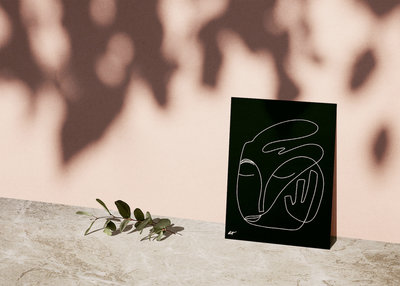

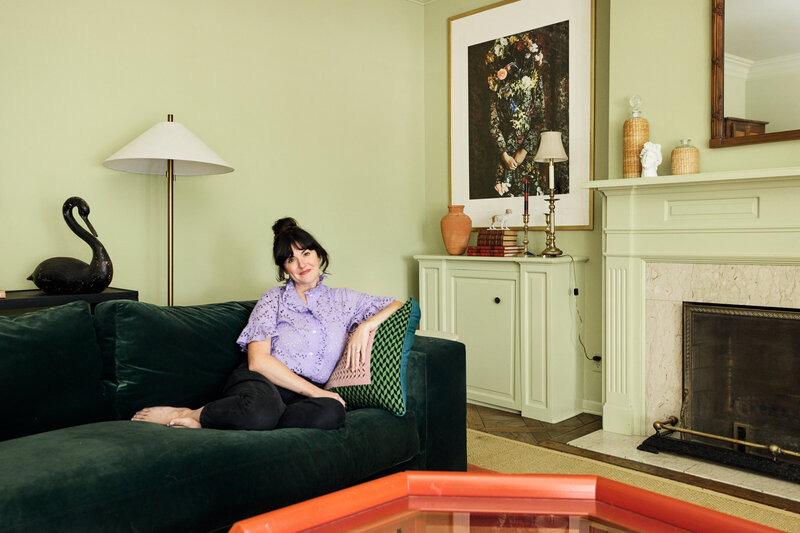

Thank you for being here. For being open to enjoying life’s simple pleasures and looking inward to understand yourself, your neighbors, and your fellow humans! I’m looking forward to chatting with you.
Hi, I'm Kate. Welcome to my happy place.


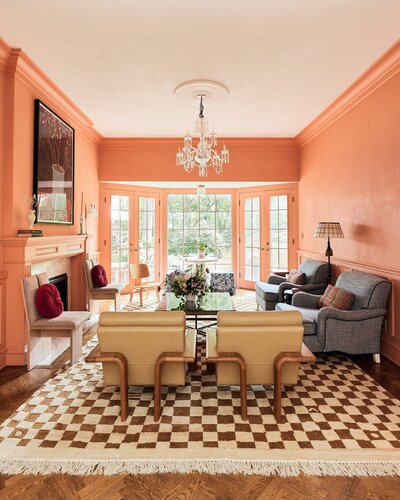

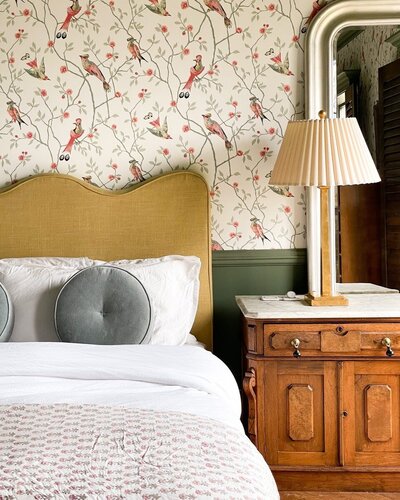






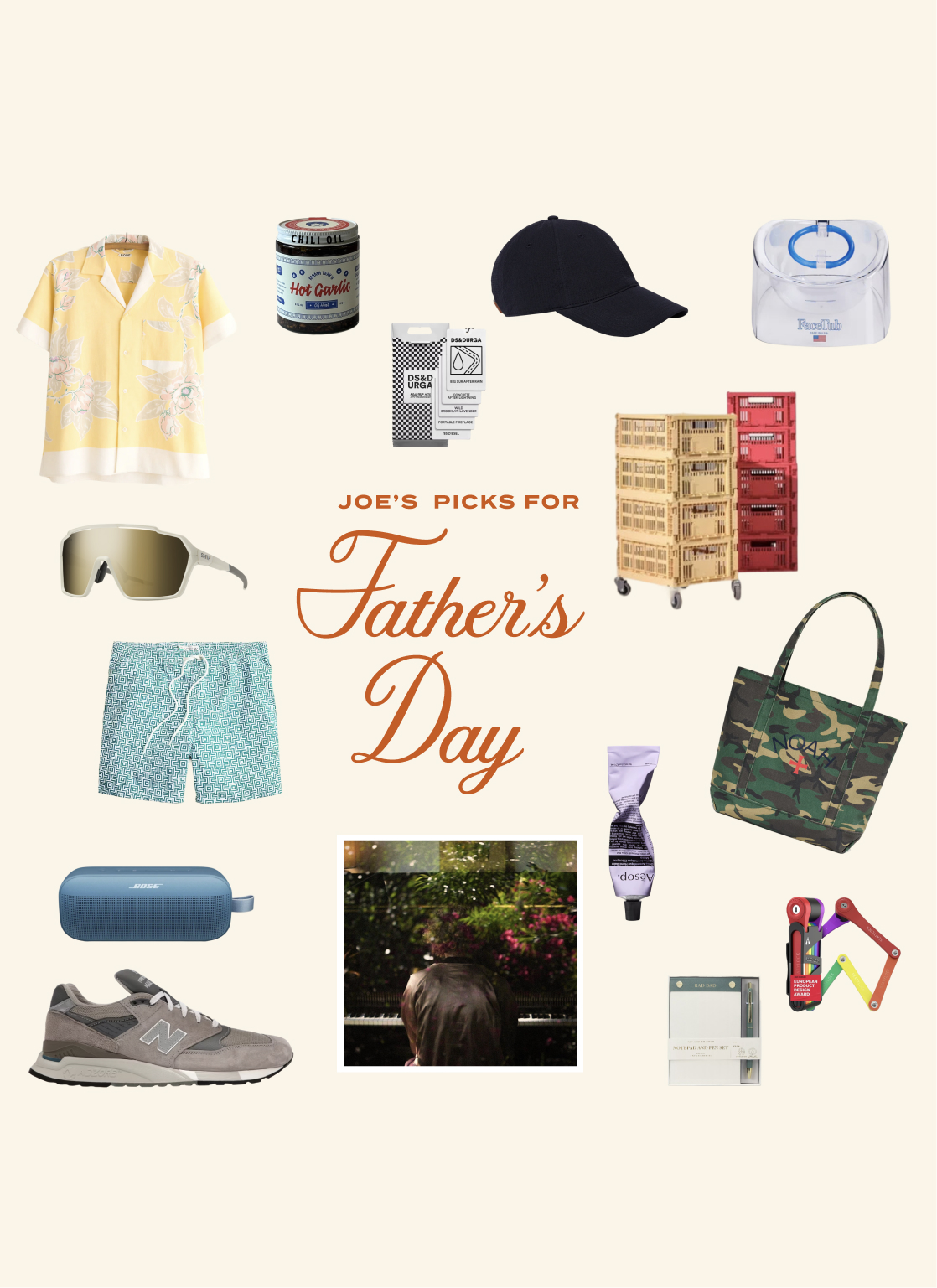

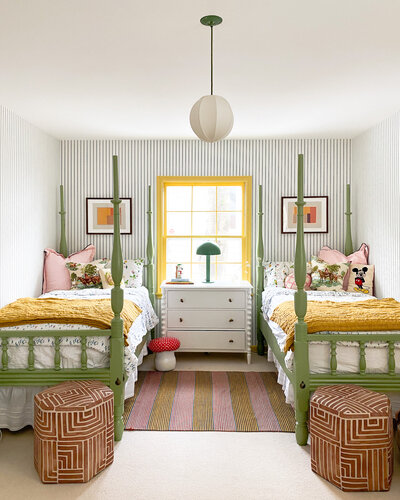
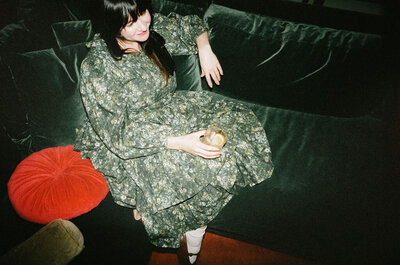

Great article. Well done! Loved that you unpacked this topic. Good point about leaving interview suits for those who really need them. I’ve tried to thrift as much as possible and try my hardest to avoid major fast fashion companies. A very important read and one I’ll be sharing with friends :).
It’s pretty unfortunate how things have unfolded in the past 10 years or so, I’ve been shopping secondhand since I was a child because that’s what I could afford. Prices have gone up and just about every shop now has young people who resell on depop and the like reaching over mothers shopping for their families. Often what’s left for the is second-rate clothes that are just as expensive as fast fashion online or at the mall. A lot of these resellers travel into poor and working class communities to hunt, I’ve seen organized teams at the Goodwill outlets, pretty… Read more »
Ditto. The main driver in price increases in our market is resellers. While store managers may not admit it to the general public, the conversation is very much had behind closed doors.
Goodwill is a reseller themselves with their online auctions.
I agree. I thrift to save money and express my unique style. It angers me that others buy up all the clothing in the sale tag color with no regard for people who have economical hardship and no other place to go. For this reason I no longer donate to the chain thrifts, only local stores.
I “thriffted” for 2 yrs. And it was the best until my husband found out. Since we can afford to buy retail he feels thrift stores are for the needy. I say since I look for unusual items it’s fair for me to shop. The deals are the best in small towns. Like the persian rug for $8.00, valued at over $2000.00!! Ye ha
Very good article and yes it’s good to be conscious when you go shopping, however they have so much we can never buy all of it. When I walk into a store a joy comes over me, especially when I see something one of my long gone relatives used to have, the memories I miss come flooding back, thrift stores have cool stuff and not to mention quality we can no longer can get. Thrifting is not only helping the less fortune, but the economy as well. If you thrift and sell to help your family to pay bills or… Read more »
I also forgot to mention. I read an article one young lady started selling on depop to pay her way through college, because her single mother couldn’t help her.
We donate everything after we no longer need it. I don’t shop at the outlets we donate to because I don’t want to take nice things that might be available at these places from people who need them. I have options to provide for my family, but lots of people don’t have those options. It’s a simple way for me to help our community by sharing our blessings.
I read all your input on this topic and it’s so surprising that this is the first time I come across someone writing about it I’ve drifted all my childhood till this day I enjoy thrifty for me or my kids or my grandkids that I can afford it when I grow up we were poor my mom made us dresses from fabric When I was 15 in high school I wore it with pride and I learn from it it’s not a shame to buy and wear something used because it is still in good condition, I have family… Read more »
The idea that resellers are taking from the needy is simply not true. Resellers are very selective, because only a small percentage of items will generate a profit.
Name brand items are a want, not a need. Nobody needs a pair of Nikes.
Nobody needs a Michael Kors purse. Resellers are providing for their families and providing a service to their customers who do not want to pay retail for Brand name items. Nothing wrong with making an honest living.
I have been thrifting for about 25 years and started to notice the change in price, and quality about 5 years ago. The last 3 years it has become awful. I inquired at a few of the stores about the drastic price increases and lack of quality merchandise. The managers at one of the largest thrift stores chains in the country said they have hired people to review the donations so they can keep the choice items to sell on their site. For the items that make it to the stores the managers all go to eBay listings to price,… Read more »
Did it ever accure to you that the needy would like to have name brand items too? There are easier ways to make money. I prefer saving money and the environment by buying thrift and reselling it when I no longer need it. That is only possible when I thrift quality items.
I’ve been thrifting for at least 30 years. Mostly out of need to find good products at great prices. I’ve furnished my home and my wardrobe. I rarely buy new. However, my favorite thrift store parking lots are filled with Mercedes Benz’s, Jags, Range Rovers and the like. There used to be a stigma associated with buying somebody else’s clothes or used household goods. Prices have definitely gone up and I hear customers complaining about it. I see people on their phones and tablets researching logos. Things have definitely changed.
As a thrifter, I really appreciated this article, Meggie. I haven’t read many articles like it. I will keep all of your points in mind from now on when I thrift. Thank you!
Interesting article. I see the word “gentrification” as a dog whistle term for a race-based phenomenon and to read an article on “gentrification” written by a White woman made me stop and think. I see this article being more about class than race. People who resale need the money and are using a business model that works. People who can afford retail and shop thrift are being super cheep. Yes, prices have gone up just as the cost of doing business has gone up.
Good points. I have been disappointed with thrift stores recently I mostly see resale stock of fast fashion brands like Target, H&M, Zara. It’s much harder to find 100% wool and cashmere sweaters coats or pants which used to be common. I think we live in an economy where quality is being bought up and resold online. I have thrifted for 30 years and there is a dearth of real quality fabrics. I find the high end second hand resale shops are very expensive for women’s fashion so I would rather invest in new for that price. There is no… Read more »
I agree that many thrift stores are fast fashion graveyards these days…but honestly I don’t think it’s just a product of resellers scooping up the good stuff, I think it’s a product of people completely over buying worthless, cheap clothing and donating it at rates never before seen. Where I live, a “large” Midwest city, a lot of thrift stores overprice true vintage- like a dooney and bourke purse might be $30. But other stuff and most all housewares have stayed cheap. I don’t know, I get the annoyance with resellers but to take the stance that people shouldn’t thrift… Read more »
My daughter works at the Goodwill and anything of value goes to their auction site, essentially keeping it out of the hands of the poor. Also, they are expected to price items “competitively” with local stores- again, keeping it out of the hands of the poor. Seems to be just greed to me, as local stores pay for their inventory and the Goodwill doesn’t. I’m done with them!
My mother in law worked at the sorting business in the 90s and 2000s. Essentially, truck loads of used clothes would come in. 20-30 women would sort them as they came on conveyor belts. Clothes were sorted based on order. So someone from NYC or Tokyo might come in asking for vintage levy’s or sone other designer clothes, paying the business more for those. Those clothes would sometimes cost over 100, and there was a market for that. Some clothes went into American and Canadian thrift stores, and leftover, poorest quality went into Africa’s and Asia’s poorest countries. I dont… Read more »
I appreciate this article. It seems to be something nobody wants to talk about. The idea that the less fortunate are not interested in name brands , vintage or quality items is unfair. I prefer to shop items to save money and resell and or donate back when I no longer need it. I don’t have a problem with small side gigs or reselling occasionally. My problem is big time thrifing rings that also make money on YouTube and profit there too. The Niche Lady is one example. She doesn’t have a problem clearing the shelves ( with friends) of… Read more »
You could also shop to your heart’s content at thrift stores, and donate your own extra items to organizations which distribute clothing, shoes, housewares and more for free – like House of Good Deeds (HouseOfGoodDeeds. org), whose volunteers connect, sort, and host Good Deeds Giveaway events to make sure good quality items get into the hands of all those in need without involving churches or deities.